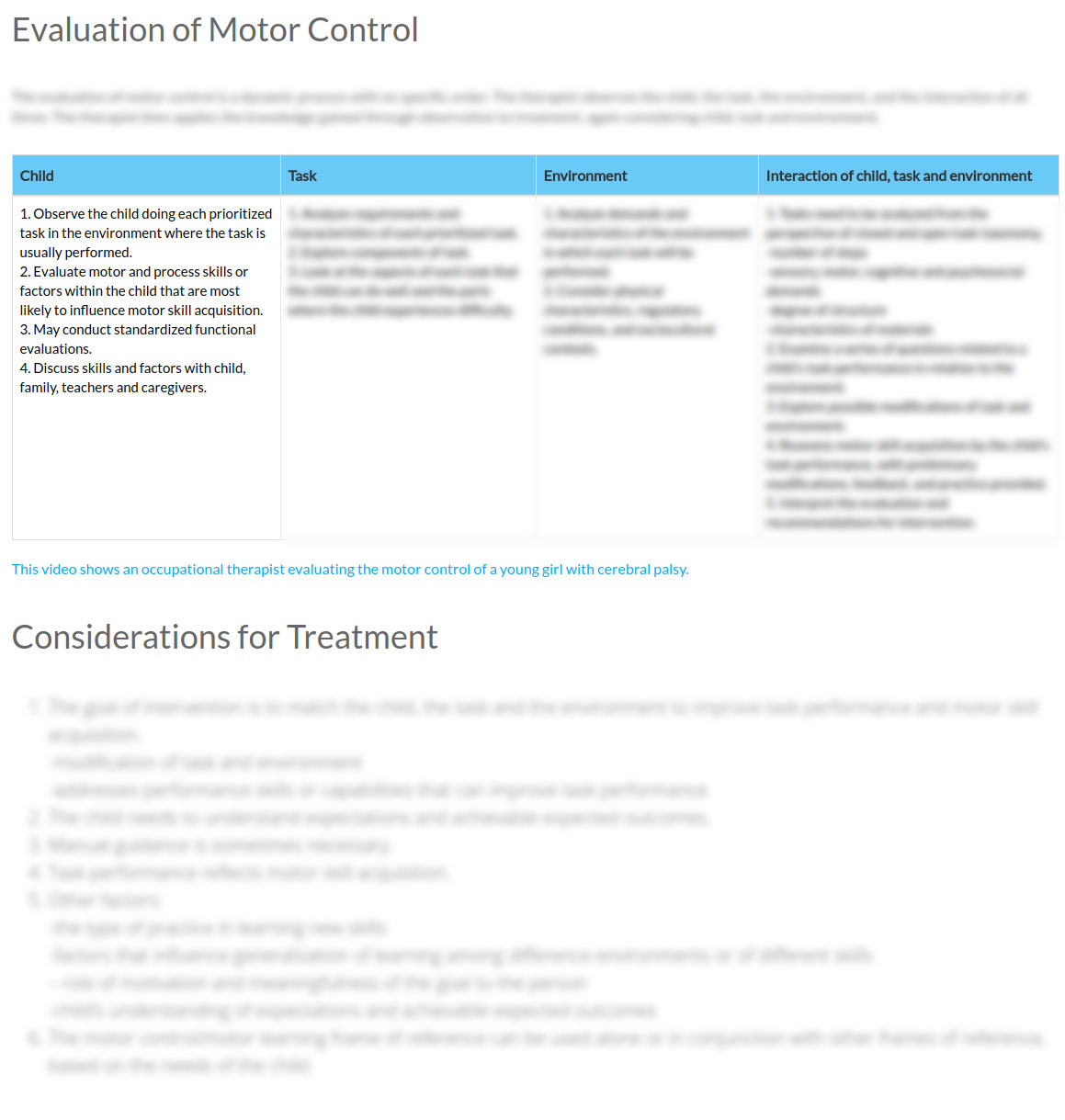The information contained in these outlines and charts will discuss the various aspects of motor control, including frames of reference, evaluation, and treatment techniques.
Motor Learning: The development of movement resulting from multiple processes, including those related to sensory/perception, cognitive and motor systems. The integration of these processes into movement is associated with practice and may include experience, motivation, reinforcement and developmental progress, all leading to permanent change in a person’s capability for skilled action. Pathology in any of the systems involved can result in impairments that may limit functional movement.
Frames of Reference
| Frame of Reference | Description | Example | Video |
| Neurodevelopmental Treatment (NDT). Authors: Berta Bobath, PT and Karel Bobath, MD | Normal movement patterns are facilitated through handling techniques while abnormal movement patterns are inhibited. Handling techniques are usually incorporated during therapeutic activities or play. | An occupational therapist positions a child with hemiplegia in a prone on elbows position and facilitates weight bearing through the affected elbow while the child uses the unaffected hand to play with toy cars. | An overview of NDT treatment is shown in this video. |
| Brunnstrom Movement Therapy. Author: Signe Brunnstrom, PT | Synergies and reflexes that occur normally during development are also viewed as a normal part of the recovery process following stroke. These synergies and reflexes are used to facilitate movement, and then are incorporated into normal movement patterns. | An occupational therapist provides moderate assistance to a boy who has had a temporal lobectomy while he reaches for toys using a flexor synergy movement pattern to initiate movement. | A presentation on the Brunnstrom approach. |
| Proprioceptive Neuromuscular Facilitation (PNF). Author: Herman Kabat, PhD, MD | The development of movement patterns is facilitated using the shift between flexor and extensor muscles, using diagonal movement patterns to encourage this shift. | An occupational therapist provides minimal assistance while a teenage girl with a diagnosis of cerebral palsy uses a diagonal movement pattern to reach for cups in a cupboard and place them on a cart on the opposite side of her body. | An occupational therapy instructor demonstrates PNF diagonal movement patterns with a student. |
| Rood Approach. Author: Margaret Rood, MA, OT | Sensory stimulation is applied to specific sensory receptors to facilitate and normalize movement patterns. | An occupational therapist uses an electric brush to stimulate the receptors on the biceps muscle while a boy who has had a traumatic brain injury works to actively bend his elbow. | A man demonstrates three Rood approaches to sensory stimulation. |
